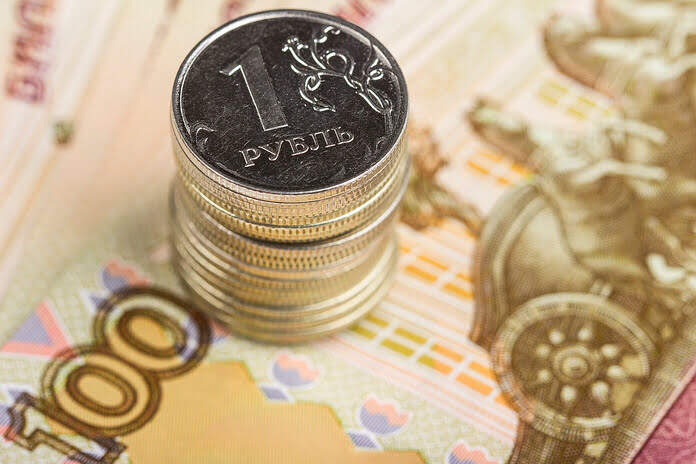Russia
The recent oscillations in the value of the Russian ruble have brought to the forefront a critical vulnerability within President Vladimir Putin’s economic strategy. In a swift response to this predicament, the Kremlin’s economic team enacted an emergency interest rate hike. However, this solution merely serves as a temporary patch to a more profound quandary that Russia’s economy confronts: the delicate balance required to sustain substantial military funding while averting the destabilization of the national currency and the escalation of corrosive inflation.
Despite the extensive web of sanctions tightly interwoven with the ongoing conflict in Ukraine and the exodus of several prominent Western corporations, life within Moscow appears to project an aura of normalcy. On the bustling Bolshaya Nikitskaya street, fashionable locals fill outdoor seating at eateries, basking in the gentle embrace of August’s warm weather. The air resonates with the rhythm of lively music emanating from adjacent courtyard diners. Notably, although shopping malls bear an unchanged facade, the retail landscape has undergone a transformation, with fresh clothing brands such as Maag and Vilet replacing the familiar emblems of Zara and H&M.
Despite several key economic indicators residing within acceptable ranges – encompassing low unemployment rates, economic growth surpassing expectations, and a moderate inflation rate of 4% as of July – the weight of these circumstances bears heavily on those with constrained financial resources. In a climate where open critique of the military can lead to legal repercussions, the citizens of Moscow, often identifying themselves solely by their first names, find themselves oscillating between unease and resignation.
Vladimir Cheremesyev, a retiree aged 68, draws a parallel between the current situation and the challenges encountered in the aftermath of the Soviet Union’s dissolution in 1991, underscoring the delayed impact. “I don’t sense the full impact yet,” Cheremesyev muses, “but there’s a persistent anxiety that occasionally triggers spikes in my blood pressure.”
Meanwhile, apprehensions concerning fluctuating prices endure, and individuals like Yuliana, an entrepreneur aged 38, articulate the pronounced decline in their financial circumstances. Businesses, adapting to the disrupted supply chains, have begun to explore alternative sources, often turning to Asian markets.
Within the realm of manufacturing, the Russian-made sutures and materials sector bears witness to a notable degree of substitution. Notably, the government’s allocation of funds toward military and social initiatives infuses a fresh influx of currency into the market. Simultaneously, labor scarcities, a byproduct of emigration, fuel wage increases, while government-backed mortgage programs sustain activity within the real estate sector.
The automotive industry’s landscape reveals a distinct impact as Western manufacturers gradually withdraw from the Russian market. As this void widens, Chinese vehicle imports steadily rise. Paradoxically, foreign travel remains both restricted and prohibitively costly due to the confluence of visa constraints and airline embargoes.
The pressure exerted on the ruble, largely stemming from the curtailment of oil revenues due to Western sanctions, compounds the multifaceted economic challenges confronting Russia. This translates to a narrowed trade surplus resultant from heightened imports, thereby weakening the ruble’s standing. Curiously, the weakened ruble, while detrimental in some aspects, serves as a boon to the government, bolstering its ability to meet financial obligations as the value of oil exports translates to a greater quantity of rubles.
The Kremlin’s preferred ruble-to-dollar exchange rate faced a breach when the ruble dipped below the psychologically significant mark of 100 to the dollar on August 14th. Responding with strategic agility, the central bank orchestrated a substantial emergency interest rate hike, targeting a reduction in import demand. While this move initially bolstered the ruble, subsequent days witnessed a gradual regression.
Presently, the Russian economy endures relative stability, even as the endurance of sanctions and escalated military spending forecasts long-term repercussions. The conundrum of sustainably financing a protracted war while forestalling economic turmoil presents a vexing challenge devoid of clear solutions. Furthermore, Western nations retain the capacity to magnify the Russian’s economic tribulations by imposing further limitations on its oil earnings through price caps.
While the recent depreciation of the ruble does not herald an impending financial crisis, the Kremlin’s influence over the exchange rate, coupled with the recent uptick in oil prices, imparts an element of stability. However, the ramifications of President Putin’s decisions, which encompass not only diminished economic growth but also heightened pressure on the ruble, hold the potential to reshape the contours of the Russian economic landscape, thereby directly influencing the quality of life experienced by its populace.
Featured Image: Freepik @ photomars















